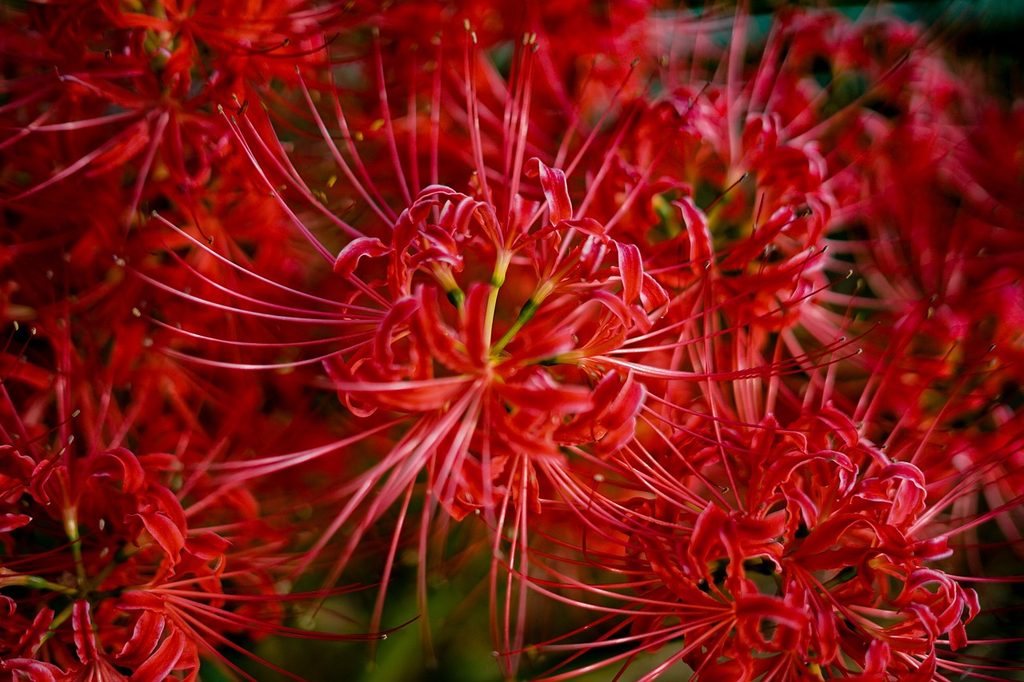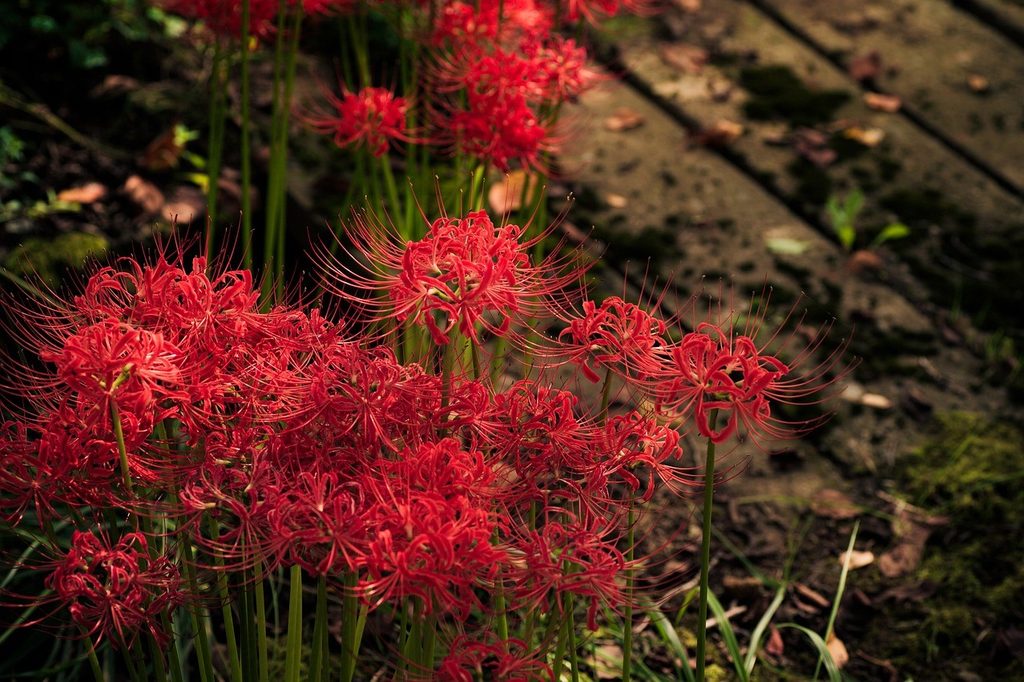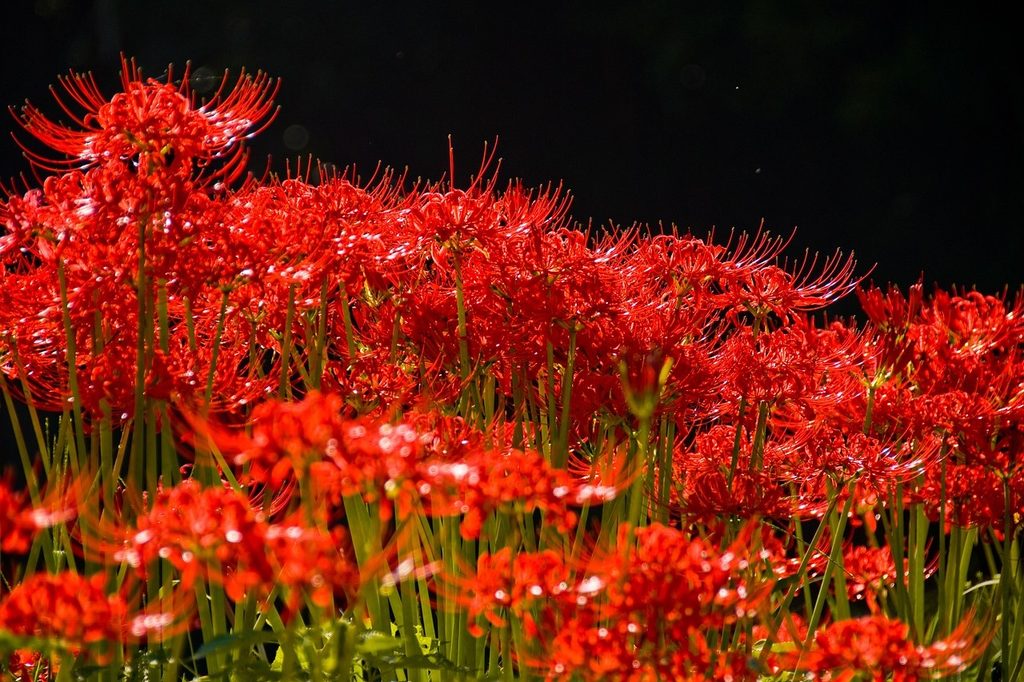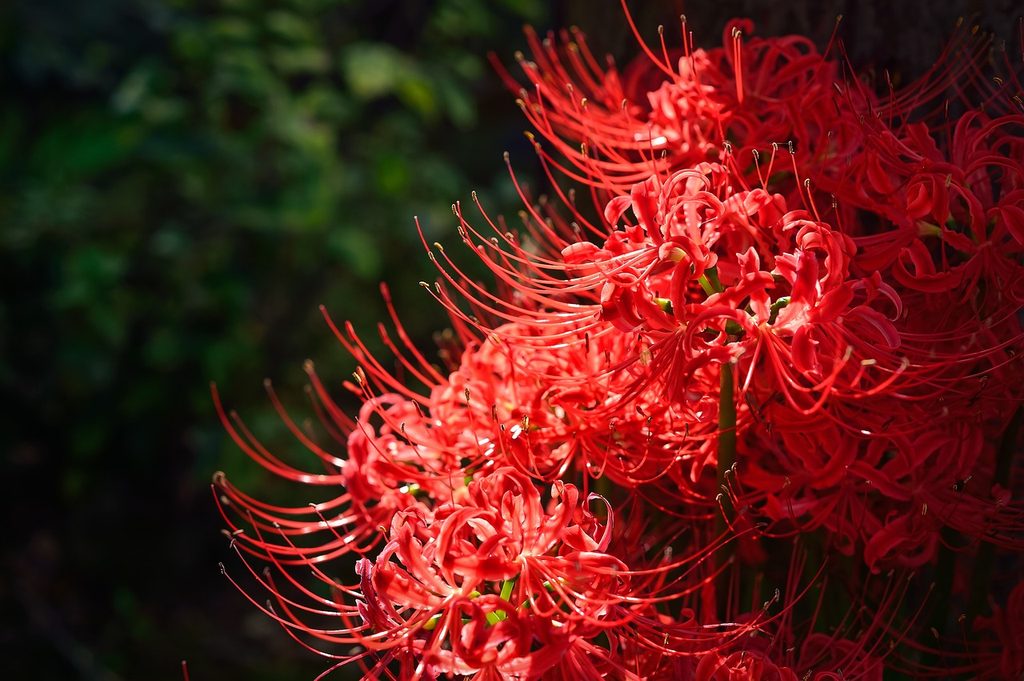
Red spider lilies are beautiful, vibrant, and interesting. With their bright red color and unique flower shape, they’re certainly charming. Whether they’re growing on their own or the centerpiece of a larger display, red spider lilies make for a gorgeous addition to most gardens.
Want to grow your own red spider lily? It’s easier to do than you might assume! Here’s everything you need to know to grow your own red spider lily flowers and ensure that they thrive. From planting to pest control, we have you covered in this handy guide to red spider lily care.
Planting red spider lilies

Start planting your red spider lily bulbs in spring or fall. If you live in an area where winters drop more than a degree or two below freezing, consider planting your red spider lily in a container, so you can move it indoors or into a greenhouse during cold weather. it requires rich and well-draining soil with decent water retention. While spider lilies don’t enjoy standing water, they do like moist soil. They also prefer alkaline soil over acidic soil, so a pH test may be in order.
Choose a planting location in partial shade to full sun. Red spider lilies, unlike other spider lily species, actually prefer partial shade. However, they can tolerate more sun and will grow in full sun as well. They don’t enjoy full shade. If you’re growing multiple red spider lilies or planting other flowers alongside your red spider lily, space them at least 6 to 9 inches apart.
Red spider lily plant care

When it comes to red spider lily care, the keywords are balance and moderation. Red spider lilies enjoy moderately wet soil and semi-regular fertilization. If the soil is too wet or too dry, or if they have too much or too little fertilizer, they won’t thrive. This can lead to flowers that are less vibrant, smaller, or that simply don’t exist. During winter, you should add mulch around your red spider lilies to keep them warm. If the temperature drops below freezing, move them indoors or to a more sheltered location.
Water your red spider lily when the soil is fairly dry, with reduced watering in late fall and winter while the plant is dormant. Fertilize your red spider lily with balanced or high nitrogen fertilizer in early spring, when it is putting out its first growth of the year. Fertilize it again in late summer or fall with a high-phosphorus fertilizer. The exception to this is newly planted bulbs, which should not be fertilized at all. Newly planted bulbs need time to acclimate or the fertilizer will burn them.
Common pests and problems

Red spider lilies have few problems with pests. They’re poisonous to many creatures and unappetizing to most others. However, there are other common non-pest problems you should be aware of. An imbalance in the red spider lily’s care primarily causes these. The wrong amount of sun, shade, water, and fertilizer can all cause weak, wilted, or dull red spider lilies, and they can cause your red spider lily to stop blooming. Keeping a garden journal, either physically or in an app, can make the problem easier to identify, allowing you to go over your notes and find the cause of your wilting or weak red spider lily.
There are a few signs that can help you narrow down the cause, even if you don’t have a record of your care. Plants growing in too much shade are often pale, limp, and too tall or leaning in an odd direction. Plants in too much sun often have irregular brown or black burns. Underwatered plants tend to be yellow or pelt, limp, and dry or leathery, while overwatered plants are often yellow, limp, and soft or squishy.
Red spider lily companion plants

Red spider lilies look incredible on their own, but they work well as part of a group, too. Plant your red spider lily alongside other flowers that bloom in late summer or fall for a seasonal display, or mix them with spring-blooming flowers to keep your garden colorful year-round. Other spider lilies, tulips, daffodils, lantana, phlox, snapdragons, sedum, pansies, and oxblood lilies all look incredible when planted with or near red spider lilies.
You can also plant foliage plants around your red spider lilies to add depth to your garden. Since they grow on tall stems and don’t have leaves for much of the year, foliage plants keep the ground from looking too bare. Ferns and hostas are great choices, and there are many types of both you can choose from.
Red spider lilies are a beautiful sign of late summer and fall, and now you’re prepared to add them to your own home or garden. If you bring them indoors during winter, be sure to keep them away from your pets. Red spider lilies are not safe for pets and can make them quite ill. Luckily, this toxicity keeps most pests away as well. Enjoy your vibrant and interesting red spider lily plant!


